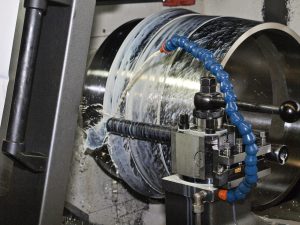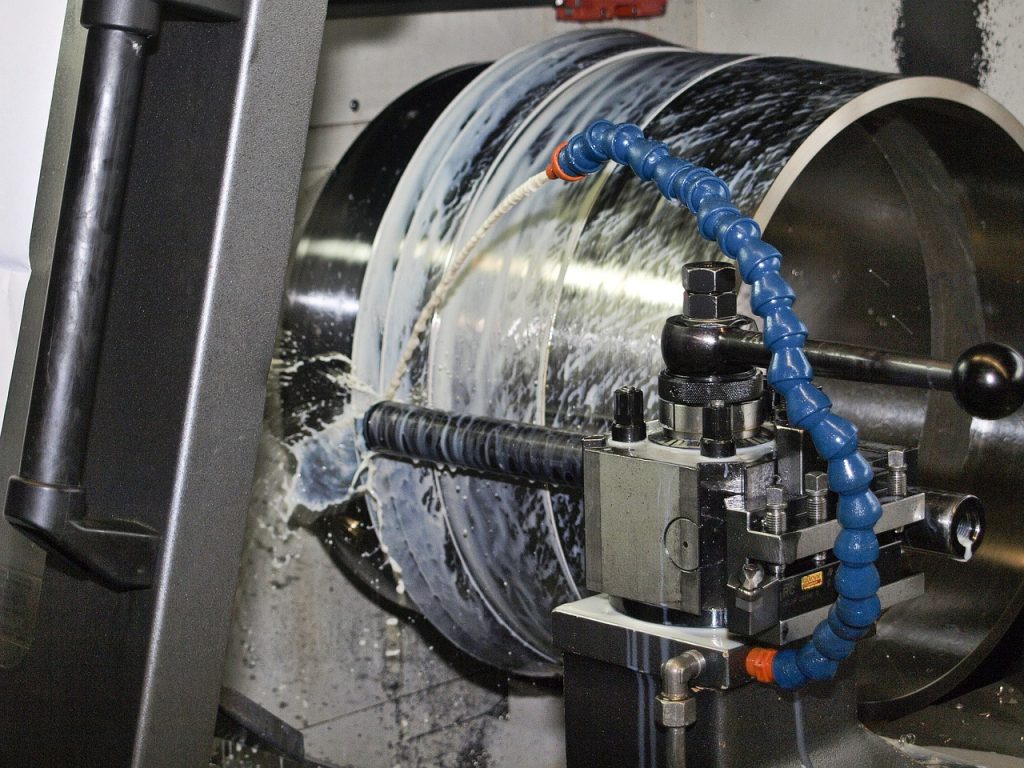Essential Lathe Machine Safety Tips for Beginners
Using a lathe machine can be both exciting and rewarding, but it also comes with certain risks. Safety should always be a top priority, especially for beginners who may be unfamiliar with the potential hazards involved in lathe operations. In this post, we’ll go over essential lathe machine safety tips to help you work confidently while minimizing the risk of accidents.

1. Wear Proper Safety Gear
Always wear appropriate safety gear when operating a lathe machine. Some essential protective equipment includes:
- Safety Goggles: Protect your eyes from flying debris, chips, and dust.
- Hearing Protection: If you’re working in a noisy environment, use earplugs or earmuffs to protect your hearing.
- Gloves: Wear tight-fitting gloves to protect your hands from sharp edges and heat. However, avoid loose-fitting gloves that could get caught in the machine.
- Apron or Protective Clothing: Wear a snug-fitting apron or clothing to prevent getting caught in rotating parts. Avoid loose sleeves, ties, or jewelry.
2. Secure the Workpiece Properly
Before starting the lathe, ensure that the workpiece is securely mounted between the centers or in the chuck. A loose workpiece can lead to dangerous vibrations, loss of control, or even ejection from the machine. Double-check that the chuck, tailstock, and tool rest are all properly tightened before you begin.
3. Use the Correct Cutting Tools
Always use the correct cutting tools for your lathe project. Using inappropriate or dull tools can lead to poor quality work, excessive strain on the machine, and potential injury. Make sure your tools are sharp and designed for the material you’re working with, whether it’s wood, metal, or acrylic.
4. Keep the Work Area Clean and Organized
A cluttered workspace can increase the likelihood of accidents. Ensure that your work area is clean, and keep tools and materials organized. Remove any debris, dust, or chips from the machine and floor regularly to avoid slipping or interference with the machine’s operation.
5. Never Leave the Lathe Unattended
Never walk away from a running lathe machine. Even if you’re working on a long, automated process, always stay close to the machine in case something goes wrong. If you need to step away, turn off the machine and make sure it has come to a complete stop before leaving the area.
6. Check for Proper Speed Settings
Make sure that the lathe is set to the appropriate speed for the material you’re working on. Running the machine at the wrong speed can cause excessive wear on both the machine and the tool, increase the likelihood of a workpiece slipping, and reduce the overall quality of your work. Always refer to the lathe’s manual to find the recommended speeds for different materials.
7. Stand Clear of Moving Parts
When operating the lathe, avoid standing directly in line with the rotating workpiece. If the workpiece becomes unstable or breaks, standing off to the side will help prevent injury from flying debris. Always keep your hands, body, and clothing clear of the rotating parts, and never try to adjust the machine while it’s running.
8. Avoid Distractions
When using a lathe machine, the focus is key. Avoid distractions like using your phone, talking to others, or listening to loud music. Working with heavy machinery requires full concentration to avoid mistakes or accidents.
9. Perform Regular Machine Maintenance
Maintaining your lathe machine is essential for both safety and performance. Check the machine regularly for signs of wear, loose parts, or damage. Ensure that all moving parts are well-lubricated and that the machine’s belts and pulleys are in good condition. Regular maintenance will not only extend the life of your machine but also keep it running safely.
10. Turn Off and Unplug the Machine After Use
After you’ve finished using the lathe, turn off the machine and wait for it to come to a complete stop. Unplug the machine before performing any cleaning or maintenance, or if you need to change the cutting tool or adjust the workpiece. This prevents accidental startup and ensures your safety.
Conclusion
Following these safety tips is essential for anyone operating a lathe machine, particularly beginners who are still learning the ropes. By wearing the right protective gear, keeping your workspace clean, and focusing on proper technique, you can ensure a safe and productive experience with your lathe. Always remember that safety is just as important as mastering the machine itself.
Ready to start your next project safely? Check out our selection of safety gear and lathe accessories to make your workshop as secure and efficient as possible.


